Should I use Caligo Extender or Opaque White?
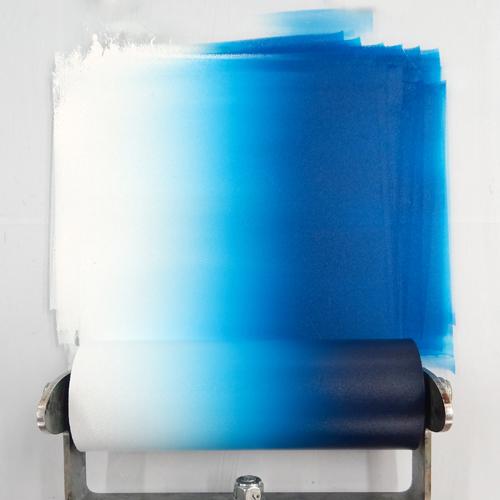
When mixing shades of ink, we have the choice to dilute the colour with either Opaque White ink or Extender. Both of these give us different results so which should we choose?
We have performed a few experiments to show the difference between mixing with Opaque White and Extender. We have used Cranfield Caligo Safe Wash Relief Inks which are oil-based but water washable.
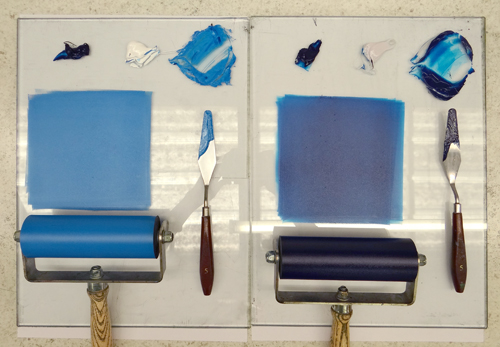
On the left, Caligo Process Blue is mixed 50/50 with Opaque White. On the right, the Process Blue is mixed 50/50 with Extender. We can see that the colour is much more subdued when mixed with white vs the extender. The white lightens the colour whereas the extender does not dilute the colour nearly as much.

Below, the Process Blue has only been added as a tint to the Opaque White (on the left) and the Extender (on the right). The Opaque White mix has a much more chalky finish and sits more heavily on the paper. The Extender mix has more of a sheen and the colour is stronger.
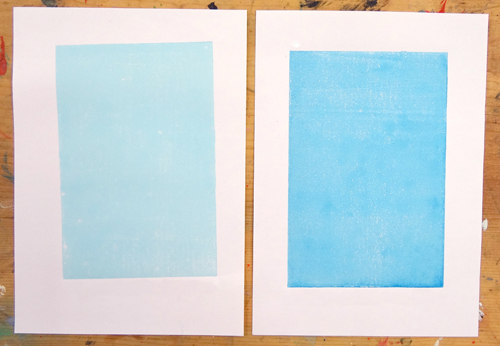
When layering, we may want the colours underneath to show through or we may want to cover them up.
At the top of both of the prints below, Process Blue has been printed, undiluted, over the top of Process Magenta. We can see a little of the design through the Process Blue as the ink by itself is slightly translucent. At the bottom of the print on the left, a mix of 50/50 Process Blue and Opaque White has been printed over the Magenta.
At the bottom on the right, Process Blue has been mixed 50/50 with Extender and printed over the Magenta. We can see that the white mix is much more opaque and covers up much more of the Magenta than the Extender mix. We can see that the Blue and Magenta have mixed to create a new shade.
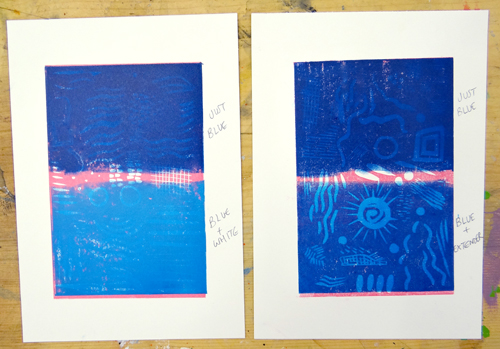
In the below experiment, increasing amounts of Process Blue have been added to Extender.

The ink rolled out on the slab shows the transparency of the Extender. We can also see that even a tiny proportion of coloured ink adds enough pigment to make a strong colour.
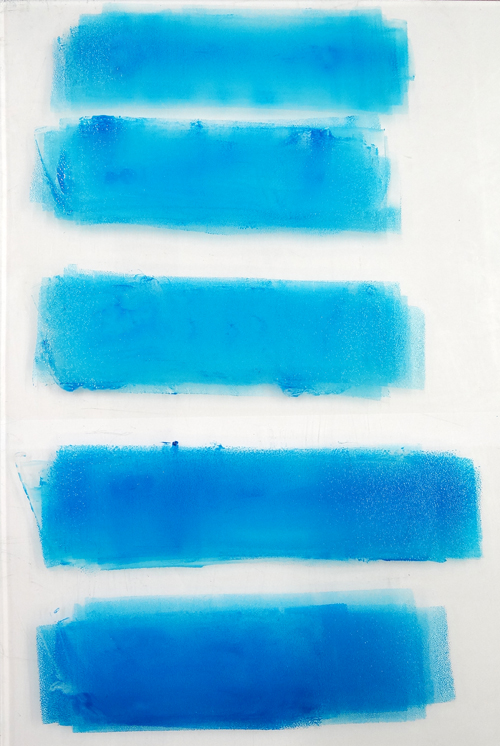
The transparency of these inks can be seen below where the ink has been rolled out onto white paper.

The same experiment was carried out using Opaque White instead of Extender.
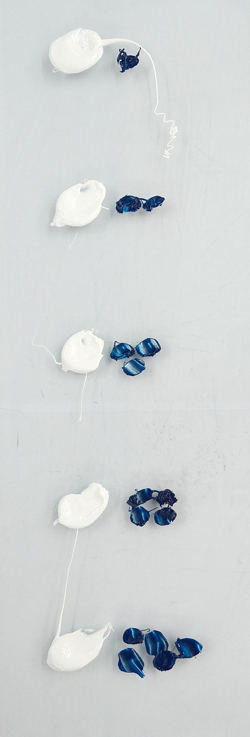
Here, the resulting colours are a lot more opaque and chalky. The colour also changes much more as more Blue is added.
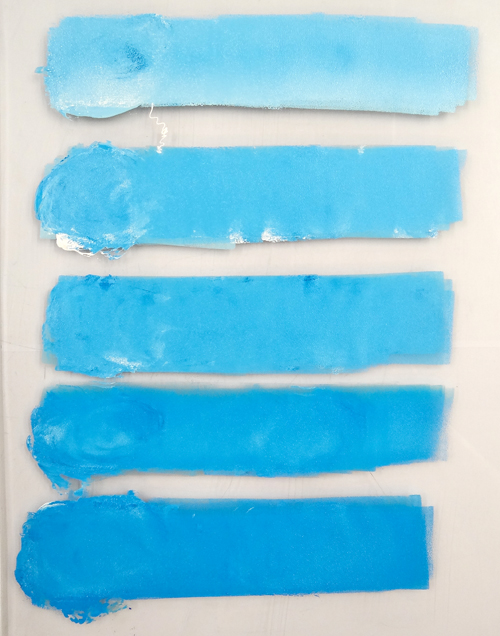
The inks are also much flatter and more opaque when rolled onto white paper.
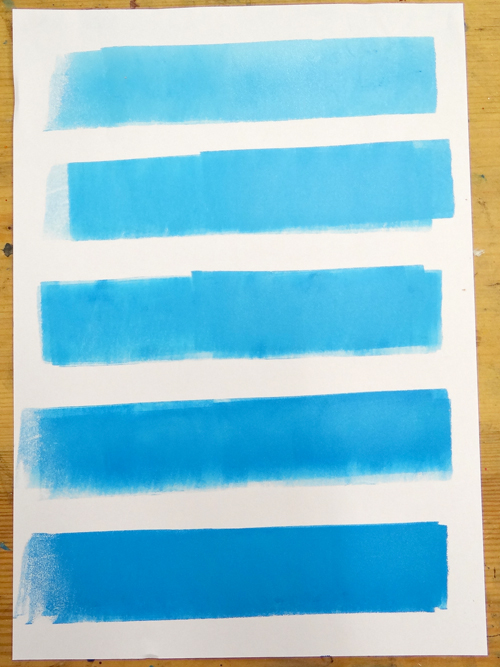
On the left below is the Extender and on the right, the Opaque White.
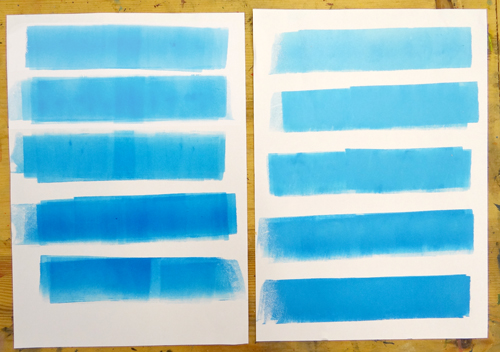
Next, we created rainbow rolls. The first graduated from pure Extender to Process Blue.
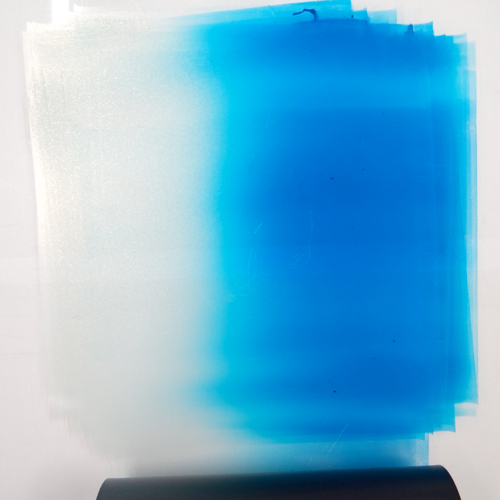
The colour crept along the Extender quite quickly, creating a fairly even blend.
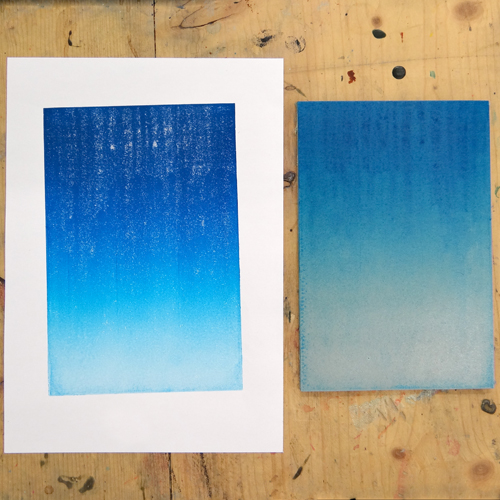
When creating a rainbow roll graduating from Opaque White to Process Blue, we can see that the White held the colour back much more effectively. The blend is also fairly even.

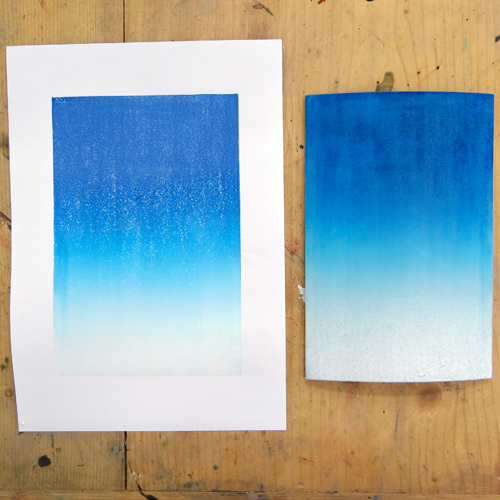
The blend is more subtle on the right where the Extender has been used.
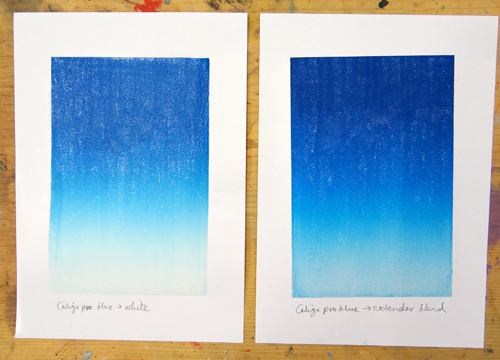
When printing these rainbow rolls over another colour, we can see the difference in opacity. At the top, where the white rainbow roll has been printed, the Magenta becomes covered much more quickly. At the bottom, where the Extender has been used, the Magenta remains visible underneath the whole rainbow roll. We can see new shades appear as the Blue and Magenta mix on the paper.
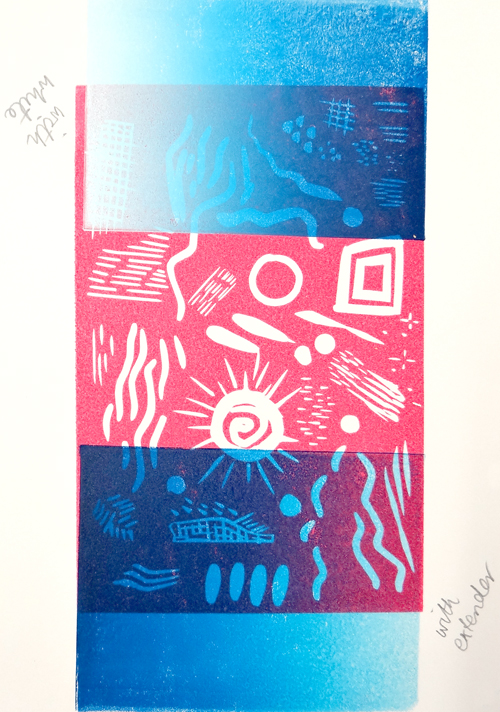
The below print shows the Magenta layer overprinted with pure Opaque White, pure Extender, a Process Blue and White mix and a Process Blue and Extender mix.

In conclusion, mixing colours using the Opaque White will lighten colours quickly but will create a slightly chalky finish. Colours mixed with Opaque White will be more effective at covering up subsequent layers of ink or when printing onto coloured surfaces.
Colours mixed with Extender are become transparent and can create new colours when printed over the top of one another. The Extender does not dilute the strength of the colour quickly meaning that only a small amount of coloured ink is required when mixing shades with Extender.
